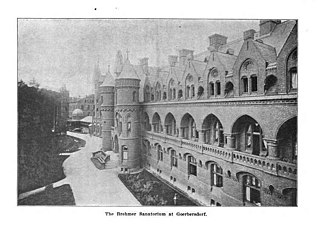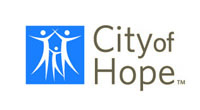
A respiratory therapist is a specialized healthcare practitioner trained in critical care and cardio-pulmonary medicine in order to work therapeutically with people who have acute critical conditions, cardiac and pulmonary disease. Respiratory therapists graduate from a college or university with a degree in respiratory therapy and have passed a national board certifying examination. The NBRC is responsible for credentialing as a CRT, or RRT,

Allergies, also known as allergic diseases, are various conditions caused by hypersensitivity of the immune system to typically harmless substances in the environment. These diseases include hay fever, food allergies, atopic dermatitis, allergic asthma, and anaphylaxis. Symptoms may include red eyes, an itchy rash, sneezing, coughing, a runny nose, shortness of breath, or swelling. Note that food intolerances and food poisoning are separate conditions.

Pulmonology, pneumology or pneumonology is a medical specialty that deals with diseases involving the respiratory tract. It is also known as respirology, respiratory medicine, or chest medicine in some countries and areas.

A sanatorium, also sanitarium or sanitorium, is a historic name for a specialised hospital for the treatment of specific diseases, related ailments and convalescence. Sanatoriums are often in a healthy climate, usually in the countryside. The idea of healing was an important reason for the historical wave of establishments of sanatoriums, especially at the end of the 19th- and early 20th centuries. One sought, for instance, the healing of consumptives especially tuberculosis or alcoholism, but also of more obscure addictions and longings of hysteria, masturbation, fatigue and emotional exhaustion. Facility operators were often charitable associations such as the Order of St. John and the newly founded social welfare insurance companies.
The National Institute of Allergy and Infectious Diseases is one of the 27 institutes and centers that make up the National Institutes of Health (NIH), an agency of the United States Department of Health and Human Services (HHS). NIAID's mission is to conduct basic and applied research to better understand, treat, and prevent infectious, immunologic, and allergic diseases.

Frances Jacobs was born in Harrodsburg, Kentucky, to Jewish Bavarian immigrants and raised in Cincinnati, Ohio. She married Abraham Jacobs, the partner of her brother Jacob, and came west with him to Colorado where Wisebart and Jacobs had established businesses in Denver and Central City. In Denver, Frances Jacobs became a driving force for the city's charitable organizations and activities, with national exposure. Among the philanthropical organizations she founded, she is best remembered as a founder of the United Way and the Denver's Jewish Hospital Association.

Children's Hospital Colorado is an academic pediatric acute care children's hospital system with its flagship hospital located in the Anschutz Medical Campus near the interchange of I-225 and Colfax Avenue in Aurora, Colorado. The hospital system has more than 600 pediatric beds at its four hospitals located in Aurora, Colorado Springs, Highlands Ranch and Broomfield. As Children's Colorado is a teaching hospital, it operates a number of residency programs, which train newly graduated physicians in various pediatric specialties and subspecialties. The hospital is affiliated with the University of Colorado Denver School of Medicine. The hospital provides comprehensive pediatric specialties and subspecialties to infants, children, teens, and young adults aged 0–21 and sometimes until 25 throughout Colorado and the Midwest. The hospital also sometimes treats adults that require pediatric care. Children's Colorado is the only children's hospital in Colorado. Additionally, the hospital has outpatient centers, campuses, and doctors offices around Colorado. The hospital features an ACS verified Level 1 Pediatric Trauma Center and features a rooftop helipad to transport critically ill patients.

City of Hope is a private, non-profit clinical research center, hospital and graduate school located in Duarte, California, United States. The center's main campus resides on 110 acres (45 ha) of land adjacent to the boundaries of Duarte and Irwindale, with a network of clinical practice locations throughout Southern California, satellite offices in Monrovia and Irwindale, and regional fundraising offices throughout the United States.

Kimishige "Kimi" Ishizaka was a Japanese immunologist who, with his wife Teruko Ishizaka, discovered the antibody class Immunoglobulin E (IgE) in 1966–1967. Their work was regarded as a major breakthrough in the understanding of allergy. He was awarded the 1973 Gairdner Foundation International Award and the 2000 Japan Prize for his work in immunology.

Philippa "Pippa" Marrack, FRS is an English immunologist and academic, based in the United States, best known for her research and discoveries pertaining to T cells. Marrack is the Ida and Cecil Green Professor and chair of the Department of Biomedical Research at National Jewish Health and a distinguished professor of immunology and microbiology at the University of Colorado Denver.

In medicine, exhaled nitric oxide (eNO) can be measured in a breath test for asthma and other respiratory conditions characterized by airway inflammation. Nitric oxide (NO) is a gaseous molecule produced by certain cell types in an inflammatory response. The fraction of exhaled NO (FENO) is a promising biomarker for the diagnosis, follow-up and as a guide to therapy in adults and children with asthma. The breath test has recently become available in many well-equipped hospitals in developed countries, although its exact role remains unclear.
The town of Colorado Springs, Colorado, played an important role in the history of tuberculosis in the era before antituberculosis drugs and vaccines. Tuberculosis management before this era was difficult and often of limited effect. In the 19th century, a movement for tuberculosis treatment in hospital-like facilities called sanatoriums became prominent, especially in Europe and North America. Thus people sought tuberculosis treatment in Colorado Springs because of its dry climate and fresh mountain air. Some people stayed in boarding houses, while others sought the hospital-like facilities of sanatoriums. In the 1880s and 1890s, it is estimated that one-third of the people living in Colorado Springs had tuberculosis. The number of sanatoriums and hospitals increased into the twentieth century. During World War II, medicines were developed that successfully treated tuberculosis and by the late 1940s specialized tuberculosis treatment facilities were no longer needed.
John E. Streltzer was a legislator in the U.S. state of Colorado, philanthropist, and former U.S. Director of Customs for Colorado and Wyoming.
Teruko "Terry" Ishizaka was a Japanese scientist and immunologist who along with her husband Kimishige Ishizaka discovered the antibody class Immunoglobulin E (IgE) in 1966. Their work was regarded as a major breakthrough in the understanding of allergy, and for this work she received the 1972 Passano Award and the 1973 Gairdner Foundation International Award. She was known in the science world for her generosity and collaborative spirit.
Fannie Eller Lorber was a Russian-born philanthropist and community activist. She founded the Denver Sheltering Home for Jewish Children, later known as the National Home for Jewish Children.
The history of the Jews in Denver, Colorado extends from the discovery of gold in 1858 to the present day. Early Jewish pioneers were largely of German backgrounds and were deeply involved in politics and local affairs, and some were among the most prominent citizens of the time. Beginning in the 1880s, the influx of Jewish immigrants from Eastern Europe to the U.S. expanded the Denver Jewish community and exposed cultural rifts between Jews from German versus Yiddish speaking backgrounds. As Denver became a center for those seeking tuberculosis treatment, Jews were among those who came seeking healing, and the Jewish community set up two important organizations that aided not only sick Jews, but the sick poor of all backgrounds. In the early 20th century, the Orthodox community in the city's West Side attracted religious new immigrants and built up a number of communal institutions. The community, especially the poor in the West Side, had to deal with anti-Semitism, sometimes violent, and the rise of the Ku Klux Klan in Colorado. Beginning in the 1950s and continuing through the 1970s, the community began to spread out of the West Side to the East Side, and then the suburbs. The community remains vibrant today, and as it has rapidly grown in the past decades so have the number of educational, recreational, and religious organizations and institutions that serve it.
Sally Ellen Wenzel–Morganroth is an American pulmonologist. She is a professor and Rachel Carson Chair of Environmental Health at the University of Pittsburgh Graduate School of Public Health. Wenzel was formally the co-director of the Harry and Jeanette Weinberg Clinical Research Unit at National Jewish Medical and Research Center.

The Jewish Consumptives' Relief Society (JCRS) was a non-sectarian sanatorium to treat tuberculosis patients in Lakewood, Colorado. Founded in 1904, the sanatorium campus was also home to the first synagogue in Jefferson County, Colorado. In 1954 the institution changed its mission to cancer research and became The American Medical Center at Denver. The American Medical Center merged with the University of Colorado Anschutz Medical Campus in 2002.
Charles David Spivak was a Russian Empire-born American medical doctor, community leader, and writer. He was one of the founders of the Jewish Consumptives' Relief Society in what is now Lakewood, Colorado. He was the editor of The Sanatorium as well as the first editor of the Denver Jewish News (now known as the Intermountain Jewish News. With Yehoash, he is also the author of what was once the premier Yiddish-English Dictionary.
Monica Kraft is an American scientist, medical professor and researcher. She is the System Chair of the Department of Medicine at the Icahn School of Medicine at Mount Sinai and Mount Sinai Health System. She is also the Murray M. Rosenberg Professor of Medicine.













